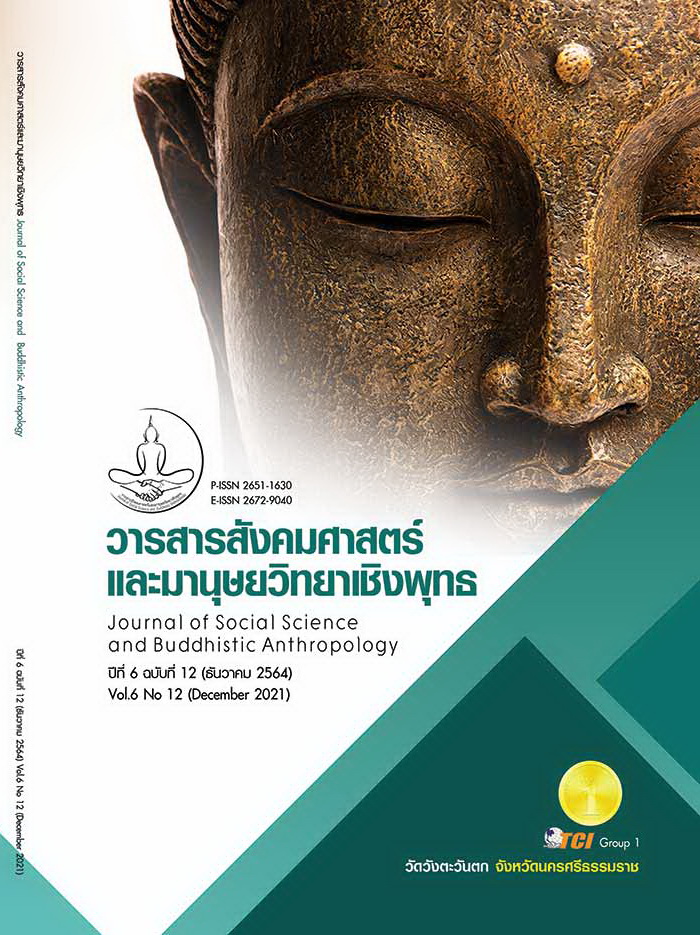STRUCTURAL MODEL VERIFICATION OF WAT CHINORASARAM WORAWIHAN PAGODA
Keywords:
Verification, Finite Element, Structural Model, Historical StructureAbstract
The objectives of this research article were to proposes the guideline to develop the structural engineering assessment model for the historical monument renovation. In addition, the verification process of the finite element model of Wat Chinorasaram Worawihan Pagoda was applied to this research. There are various levels of detail for developing the finite element model of structure, which was depending on the assumptions and limitations of the computer software. The model with highly details may cause unnecessary effort to the modeler and structural analyzing processes. In contrast, the model with low level of details may lead to inaccurate results. This research showed the comparison of analyzed results from different levels of model’s precision as recommended in the guideline for the development and analysis of structural models. Investigation processes were performed by comparing the results obtained from 3 structural models with difference level of details. The based model with the highest level of details (HDM), the Simplified Detail model (SDM) created from boundary volume of the HDM, and the Low detail model created from rod-elements which compact all geometrical details into cross-sectional area and mass (LDM). After perform stress analysis of all three models, the relations between stress and elevations of the structure were constructed. This study found that using results from a multi-level of details can suggest the reference boundary for investigating the validity of the based model. LDM was provided the lower bound stress at -6% and SDM was provided upper bound stress at 17%. The systematic processes of creating boundary volume need more future investigation.
References
กนกวรรณ ยานะถนอม. (2553). พฤติกรรมเชิงสถิติศาสตร์และพลศาสตร์ภายใต้แรงแผ่นดินไหวของเจดีย์ในเขตเมืองเชียงใหม่โดยวิธีไฟไนต์อิลิเมนต์. ใน วิทยานิพนธ์วิศวกรรมศาสตรมหาบัณฑิต สาขาวิศวกรรมโยธา. มหาวิทยาลัยเชียงใหม่.
คณะกรรมการดำเนินงานจัดทำศัพทานุกรมด้านโบราณคดีและพิพิธภัณฑ์. (2550). ศัพทานุกรมโบราณคดี. (พิมพ์ครั้งที่ 1). กรุงเทพมหานคร: สำนักโบราณคดี กรมศิลปากร.
ณรงค์ฤทธิ์ จันทน์วัฒนวงษ์ และกริสน์ ชัยมูล. (2563). พฤติกรรมเชิงพลศาสตร์ของเจดีย์คอนกรีตเสริมเหล็ก. วิศวกรรมสารฉบับวิจัยและพัฒนา, 31(1), 101-110.
ธนภูมิ อัตตฤทธิ์. (2563). การวิเคราะห์หน่วยแรงของโครงสร้างเจดีย์อิฐก่อเพื่อหาส่วนปลอดภัยกรณียกปรับระดับความสูง. ใน วิทยานิพนธ์วิศวกรรมศาสตรมหาบัณฑิต สาขาวิศวกรรมสิ่งแวดล้อมสรรค์สร้าง. มหาวิทยาลัยเกษตรศาสตร์.
นวลลักษณ์ วัสสันตชาติ. (2561). ปูนในโบราณสถานของนครประวัติศาสตร์พระนครศรีอยุธยาแหล่งมรดกโลก. วารสารหน้าจั่วว่าด้วยสถาปัตยกรรมการออกแบบและสภาพแวดล้อม, 33(2018), B43-B92.
ภคพงศ์ ภัทราคม และนคร ภู่วโรดม. (2560). การตรวจวัดสมบัติเชิงพลศาสตร์ของพระเจดีย์ วัดใหญ่ชัยมงคล จังหวัดพระนครศรีอยุธยา. วารสารวิทยาศาสตร์และเทคโนโลยี, 25(4), 670-682.
รณนภา พจนา. (2550). ปฏิสัมพันธ์ระหว่างดินและโครงสร้างโบราณสถานจังหวัดเชียงใหม่ภายใต้สภาวะการกระทำของแรงแผ่นดินไหว. ใน ดุษฎีนิพนธ์วิศวกรรมศาสตรดุษฎีบัณฑิต สาขาวิศวกรรมโยธา. จุฬาลงกรณ์มหาวิทยาลัย.
สมศักดิ์ ธรรมเวชวิถี. (2559). การบูรณะอาคารมีคุณค่าทางประวัติศาสตร์และศิลปวัฒนธรรม. วารสารวิชาการ การออกแบบสภาพแวดล้อม, 3(1), 3-19.
สำนักงานสถิติแห่งชาติ. (2563). จำนวนวัดจำแนกตามนิกายเป็นรายภาคและจังหวัด พ.ศ.2552-2561. เรียกใช้เมื่อ 15 ตุลาคม 2563 จาก http://statbbi.nso.go.th/staticreport/page/sector/th/04.aspx
สุดชาย พานสุวรรณ. (2543). การวิเคราะห์โบราณสถานก่ออิฐในเชิงวิศวกรรม. ใน วิทยานิพนธ์วิศวกรรมศาสตรมหาบัณฑิต สาขาวิศวกรรมโยธา. มหาวิทยาลัยเกษตรศาสตร์.
Bolognese, J. (2009). Finite Element Model Validity Checks. Retrieved July 31, 2021, from https://femci.gsfc.nasa.gov/validitychecks
Hansapinyo, C. (2014). Seismic performances of brick masonry inverted bell-shaped Chedi. APCBEE Procedia, 9(2014), 217-221.
Hansapinyo, C. & Poovarodom, N. (2014). Ambient Vibration Tests and Finite Element Analysis for Dynamic Properties of Brick Masonry Inverted Bell-shaped Chedi. APCBEE Procedia, 9(2014), 212-216.
Ishida, Y. et al. (2021). Inhibitory Effect Of Ground Improvement On The Settlement Of The Leaning Pagoda. International Journal of GEOMATE, 20(79), 111-118.
Marks, D. (2011). Climate change and Thailand: Impact and response. Contemporary Southeast Asia: A Journal of International and Strategic Affairs, 33(2), 229-258.
Roca, P. et al. (2010). Structural analysis of masonry historical constructions. Classical and advanced approaches. Archives of computational methods in engineering, 17(3), 299-325.
Serpieri, R. et al. (2017). A 3D microstructured cohesive–frictional interface model and its rational calibration for the analysis of masonry panels. International Journal of Solids and Structures, 122(2017), 110-127.
Trisirisatayawong, I. et al. (2011). Sea level change in the Gulf of Thailand from GPS-corrected tide gauge data and multi-satellite altimetry. Global and Planetary Change, 76(3-4), 137-151.
Wethyavivorn, B. et al. (2016). Model verification of Thai historic masonry monuments. Journal of Performance of Constructed Facilities, 30(1), 1-14.
Wonganan, N. et al. (2020). Ancient Materials and Substitution Materials Used in Thai Historical Masonry Structure Preservation. Journal of Renewable Materials, 9(2), 179-204.
Yazgan, I. O. & Unay, A. I. (2020). Planning a Relocation Method to Preserve Structural Integrity During the Holistic Relocation of Historical Buildings. Journal of Architectural Engineering, 26(4), 1-10.
Downloads
Published
How to Cite
Issue
Section
License
Copyright (c) 2021 Journal of Social Science and Buddhistic Anthropology

This work is licensed under a Creative Commons Attribution-NonCommercial-NoDerivatives 4.0 International License.








